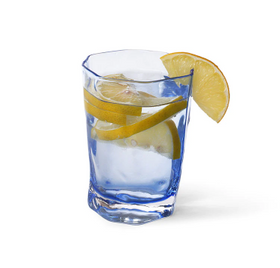Casserole Uses
You can cook not only soups in casserole. In addition to your favourite chicken stock with noodles, herbs, and boiled eggs, you can make mashed potatoes, bratwurst, cereals, sauces for main courses and desserts, stewed vegetables, and even hot drinks. Christmas mulled wine, for example, can be prepared in it.
Functions of the pots:
- Long boiling (for soups, mushrooms, potatoes);
- Fast boiling (for eggs, sausages, dumplings);
- Braising (for vegetables, sautéed mushrooms);
- Baking in the oven (for meat and fish dishes, casseroles)
- Making juices, compotes, and jams (during the harvest season)
- Steaming (for diets without frying/oil).
Classification Of Cookware By Size
Buying a casserole is a fifteen-minute task if you know what to take. The first thing to decide on is the volume. If you look in the cupboard of an experienced cook, you will find at least three different pots. There are even more if you have children, health enthusiasts, and gardeners.
Let's look at the three basic types of pots by liter:
Small 1-3 liters - a small pan for quick cooking, mini portions, and children's meals. It's convenient to heat up dinner and prepare milk porridge and dumplings.
Medium 3 to 5 liters - a medium saucepan for full-fledged first meals. Such pots are used for soups, borscht, pea soup, mushroom soup, and vegetable soup for the whole family.
Large over 5 liters - a large pot for special occasions. This pot helps to cope with special occasions - preparing mushrooms, berries, or fruits in the forest.
Typology According To Purpose
Everyday life is often full of situations in which you do not know what to prepare a dish in. For example, béchamel sauce - the traditional French dressing for souffles and lasagne. It consists mainly of milk, flour, and fat. You can knead all the ingredients in a saucepan. A deep round container is also an excellent choice.
However, the variety of such containers is much wider. A distinction is made between universal and specialty pans. There is a difference in design and, therefore, in use between the two.
The universal ones:
- The classic soup pot is familiar to you. It has a deep metal bowl, two side handles, and a lid. You can boil/stew in it, and often, even bake a dish in the oven. The main thing is ensuring that the components are adapted to the high heat.
- The ladle is regarded as a smaller version of the universal soup ladle. Its small volume, long handle, and lid make it suitable for warming up batch cooking.
- Saucepans or sauté-pans are an innovative kind of saucepan. It differs from usual pans with a thicker body, lowered sides, and larger bottom volume. The handles are traditionally side-folded and heat-resistant. A lid is often included but is not obligatory. The specialty of the sauté pan is that it allows you to boil, braise, and fry.
How You Want The Handles To Look Like
It seems to be quite simple. Most pots have two side handles, either solidly riveted or metal-clad. The handles themselves are made of the same material as the body. However, technology does not stand still. Manufacturers offer customers not only the usual standard. Today you can buy containers of three types.
- With metal handles. A classic variant, multifunctional. For the cooker and the oven. Highly mechanically sturdy.
- With heat-resistant plastic handles. The modern models. Holders made of Bakelite. It will not heat up nor melt. Only for the cooker.
- With silicone grip pads. The safest type of handle. The soft silicone grip doesn't get hot and won't slip.
- With removable handles. A versatile purchase for the cooker and the oven. The handles are made of thermoplastic, often with a pattern. Removable for baking.
There is also a ceramic pot with a lid. This type of cookware is intended mainly for baking in the oven. All components are made of ceramic to minimize heat loss, including the side holders.
Features Of The Bottom
This is an inconspicuous but very important detail. It is what makes or does not make the vessel suitable for different types of hobs. Induction, gas, electric, or ceramic hobs.
The secret lies in the design. To the human eye, it's simply a flat bottom surface. However, it either does or does not contain one important component - the ferromagnetic insert. It is a metal "pancake." The outer base is stainless steel, and the inside is an aluminum-based alloy. It speeds up the heating process and makes it uniform. In addition, the pancake is magnetic and therefore suitable for induction cookers.
Depending on this, there are two types of pan:
- The gas saucepan has no additional inner lining. Only suitable for gas, electric, and glass ceramic hobs.
- The induction cooker hob has a ferromagnetic insert. Suitable for all types of hobs, including induction hobs.


































